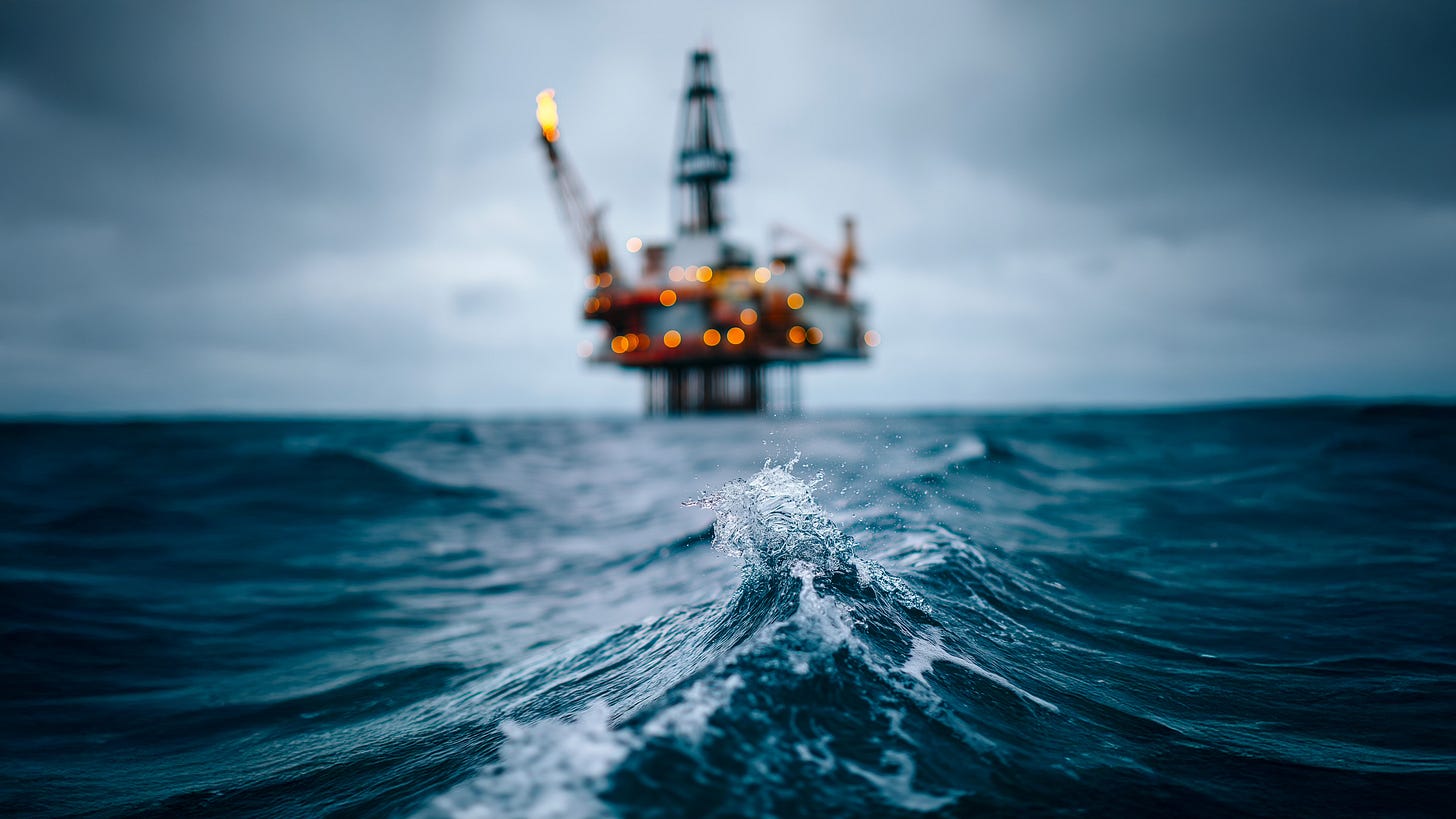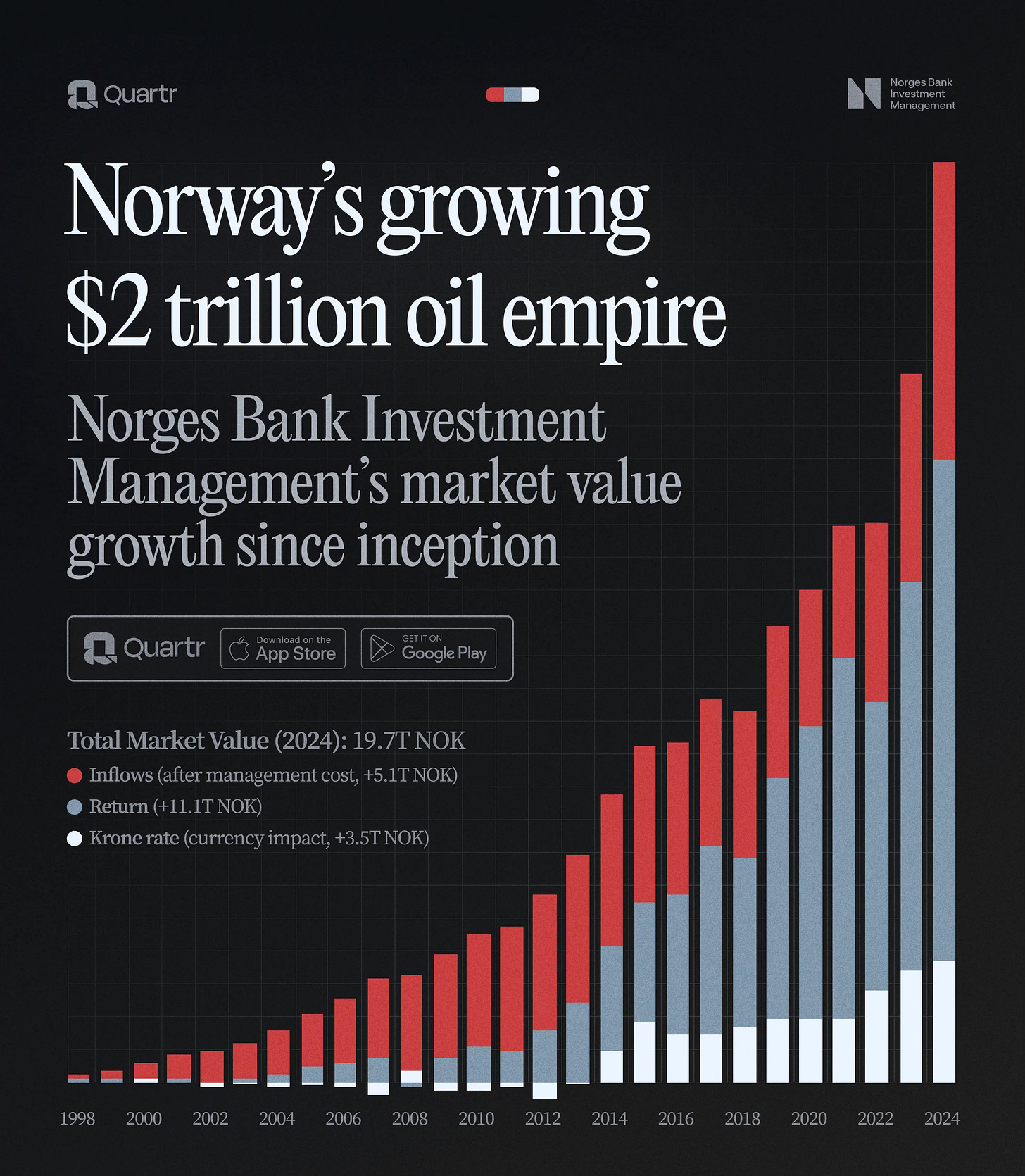Norway's $2 trillion oil portfolio
Five charts to start your day
When I worked for HSBC Asset Management’s sovereign and supranational team, we managed $80 billion for sovereign wealth funds. Yet we could never crack Norway’s Government Pension Fund Global. Known as the Norwegian oil fund, it remained tantalisingly out of reach.
Norway’s oil fund is widely seen as the gold standard for managing resource wealth. Built from petroleum revenues and invested entirely abroad, it turns finite oil into diversified financial assets for future generations. The rules are deliberately strict: no domestic investments to avoid overheating the economy, high transparency on every holding, and a spending cap tied to the fund’s expected real return. The result is a $1.7 trillion portfolio that has helped Norway sidestep the “resource curse” and smooth its budget through cycles.
The controversy isn’t about the structure but the ethics and climate optics. Norway remains a major oil exporter whilst its fund still owns stakes in companies with environmental or governance questions, despite exclusions. Activists want it to use its voting power more aggressively. Some economists argue the fiscal rule underinvests at home, whilst others warn against political raids. The financial design is smart and disciplined. But in a warming world, what it invests in and what Norway chooses to do with the proceeds is where the debate sits.
CHART 1 • Norway’s $1.7 trillion oil portfolio
Norway’s oil fund keeps growing at an astonishing pace. It ended 2024 worth $1.7 trillion after gaining 13.1 per cent. A weaker krone and fresh oil money helped too. Oil built this fund, but now financial markets do the heavy lifting.
Here’s what’s remarkable: Norway has only put in about $500 billion from oil revenues since the fund started. The markets have turned that into $1.7 trillion. That’s $1.1 trillion in investment gains. The fund now owns a slice of 8,500 companies worldwide, about 1.5 per cent of every listed firm on the planet.
The fund is mostly in stocks (71 per cent) with some bonds (27 per cent). This means when tech giants like Apple or Microsoft soar, Norway gets richer. Recently, big tech gains and fresh oil money have powered record returns, even as Norway’s own economy has slowed.
Going forward, watch three things. Will oil money keep flowing in as prices normalise? Will the krone strengthen? And will American tech giants keep delivering the returns that have made this fund so successful?
Source: Massimo
Sovereign wealth funds are often controversial because politics inevitably shapes how they’re managed and used. Even highly transparent funds like Norway’s face intense scrutiny over investment choices, governance, and how returns are deployed. But Norway’s fund stands out as exceptionally well managed, as the chart above beautifully demonstrates. That’s why I selected it as my first chart in this newsletter.
I have as always got four more charts for you today. But if you'd like to see them, you will need to become a paid subscriber.




